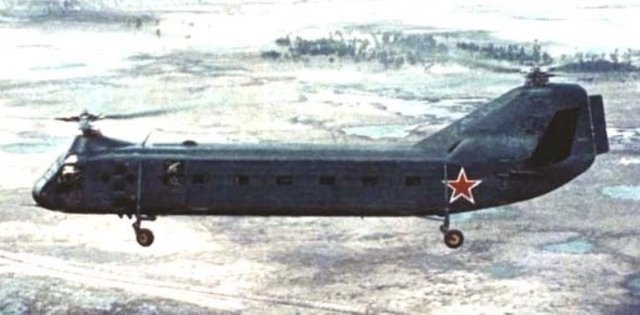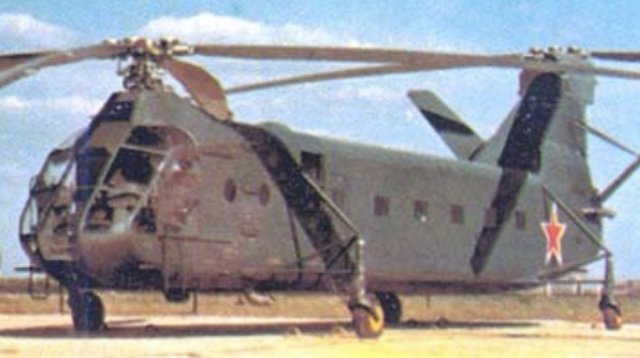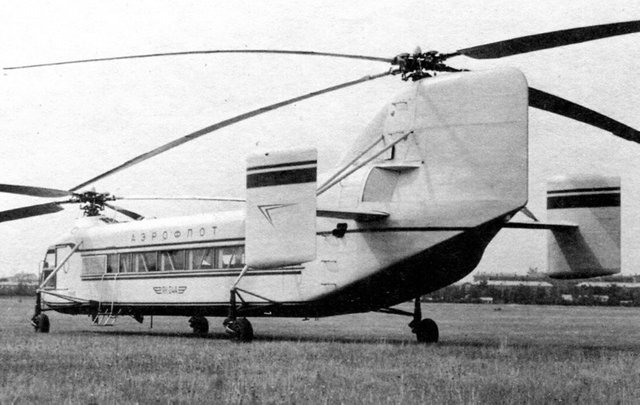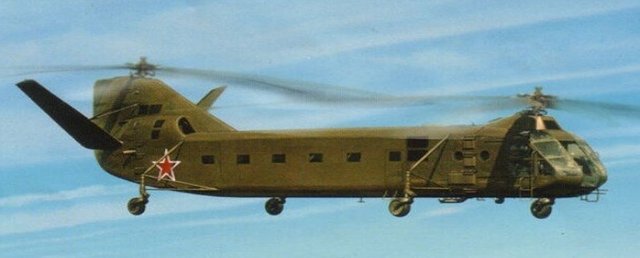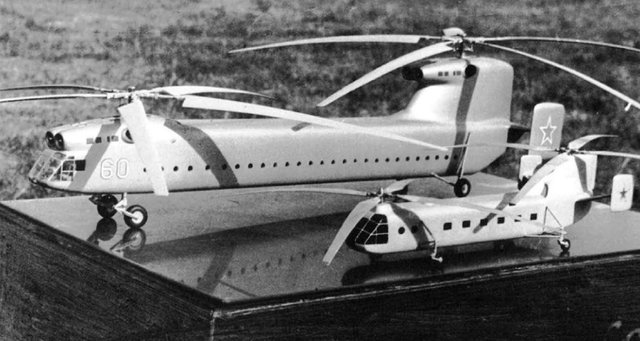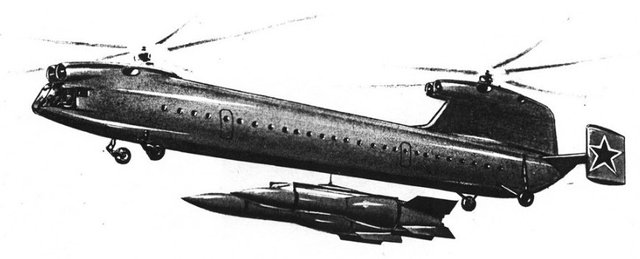In the USSR, aviation specialists, especially engineers, had high prestige due to their education and profound knowledge. This made them in demand not only within the country, but also abroad.
The knowledge and skills that aviation specialists received in the educational institutions of the Soviet Union were much deeper and more extensive than those of professionals from other fields of science and technology.
!How the project was developed!
By the early 1960s, the USSR had various models of airplanes and helicopters ready for mass production that could be used for both military and civilian purposes.
To meet the growing needs of the aviation industry, Yakovlev's design bureau continued to work on the obsolete Yak-24 helicopter model. The engineers decided that it was possible to improve this technically successful machine by applying advanced technologies that had not been used before.
The giant helicopter, designed on the basis of an innovative longitudinal scheme with two propellers located one after another at different heights, could carry cargoes of non-standard size and weight to hard-to-reach areas.
The helicopter was nearly 45 meters long, 8.6 meters wide, and 11.6 meters in overall height. Two engines with a capacity of 6497 horsepower each allowed it to lift up to 40 tons of cargo.
Another crew member was needed to fly such a large helicopter. But it was not easy to find an experienced pilot.
This project was very relevant, because in countries with capitalism also developed helicopters with increased load capacity.
Fuselage and layout of the helicopter conventionally called “wagon type”. Although at first there was a lot of controversy around this part of the design.
To make it more convenient to transport people and cargo, the transport compartments were separated.
!Why a promising development was “frozen”!
The Yak-24 cargo helicopter was the basis of the new project and until 1960 remained one of the most powerful in its class in terms of payload capacity.
If compared with other helicopters developed in the Yakovlev Design Bureau, all previous models were inferior to them in terms of efficiency. For example, the model “Pyasetsky N-16”, created in 1946, could not pass the necessary tests for a long time.
Despite the difficulties, it was in this model that Soviet engineers first used a longitudinal arrangement of propellers. Later, this approach was used to create the YAK-60.
By this time, the Yak-24 had already successfully passed a number of tests, which confirmed its high operational reliability. Not a single incident was recorded during the entire period of operation.
The helicopter could lift loads weighing up to two tons to a height of more than five thousand meters. Its maximum lifting capacity was four tons, which was a world record for that time.
The new project provided the military with unique opportunities to transport cargoes weighing up to 40 tons in a single flight. Thanks to the cargo compartments of this giant it was possible to quickly move various equipment, including heavy tanks.
The helicopter had an incredible capacity: in one flight it could carry 228 paratroopers in full combat gear or 176 wounded with 8 accompanying medical personnel.
Despite the fact that no irregularities were detected during development, only one copy of the giant helicopter was built for testing. The official reason for the termination of the project was the refusal of OKB-115 from further work in the field of helicopter construction. However, the exact reasons remain unknown, as many aspects of the development are still classified. In 1968, all technical documents and developments were sent to the archive and frozen.
